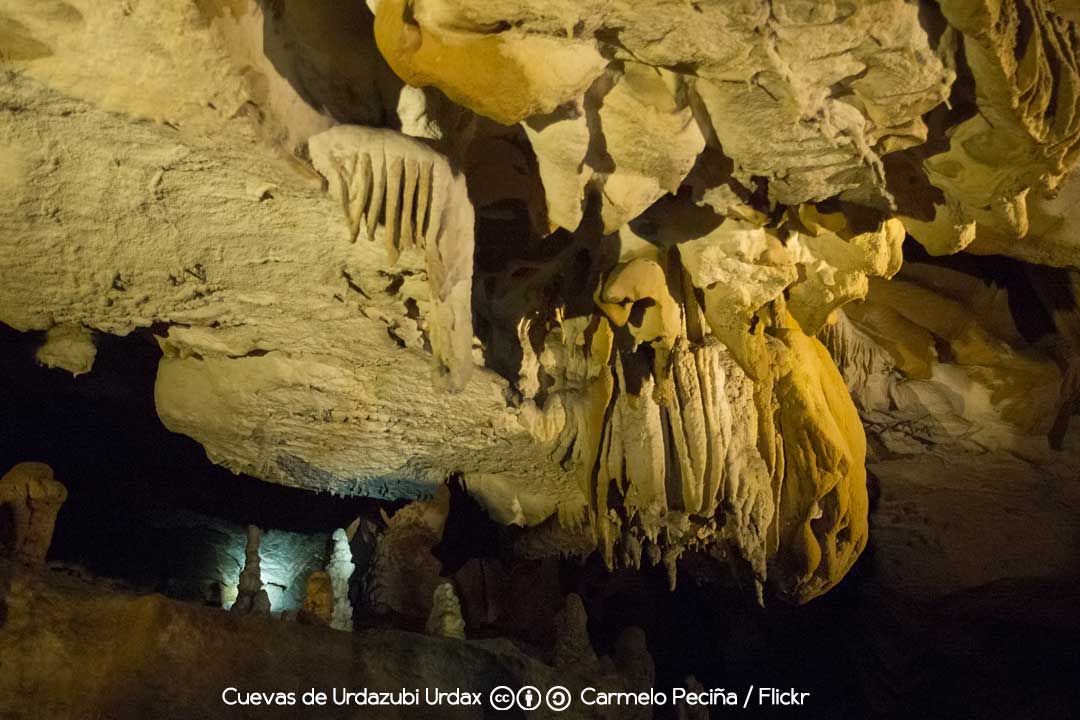Urdazubi Urdax Caves

One of the most incredible attractions of the small Pyrenean town of Urdazubi Urdax, with just 400 inhabitants, is its prehistoric caves. The cave of Ikabaru is the only one that can be visited, and is located beneath the meadows of Navarre, a few kilometres from the coast and on the border with France.
This cave has its origins approximately 14 thousand years ago, due to the continuous erosion of the Utxuma river. Inside, it has the typical formations known as stalactites and stalagmites that give it a unique underground beauty.
The haunted
The cave is full of legends: witches, smugglers, pilgrims and monks are all part of it. It is one of the most important Upper Palaeolithic prehistoric sites in Navarre, together with the caves of Berroberria and Alkerdi, which are currently closed.
A shepherd discovered this cave in 1808, but research has revealed that it was inhabited by prehistoric men. Many centuries later, it was a hiding place for smugglers and a refuge during the War of Independence.
Local legend has it that the cave is the abode of the lamias, mythological beings similar to mermaids: half fish and half women. Lamias are beings of extraordinary beauty, who often comb their hair with golden combs and sometimes fall in love with mortals, although they cannot marry them.
Inside the cave
To access the secrets of the cave it is necessary to take a guided tour. During the tour, visitors will be explained the rules that must be followed during the journey. Experts point out that the cave is very sensitive to external agents, so it is forbidden to eat inside the cave.
Inside this millenary formation the temperature stays between 14 and 16 degrees Celsius, so hikers should take precautions. And remember not to touch the stalactites and stalagmites, as they are delicate formations that have taken thousands of years to acquire these shapes.
The visit lasts about 40 minutes, during which hikers will be able to appreciate formations such as the "Reception Hall", the "Hall of the Three Kings" or the "Hall of the Columns". The presence of magnesium in the rocks, which gives them an unusual natural shine, and the sound of the Urtxuma river will turn the visit into a magical experience.
Visitors can join the excursion to the nearby caves of Zugarramurdi and Sara, along the cave path, a path of little difficulty and about 6.75 kilometres long, between meadows and woods. This path is signposted with a blue horse.
Routes
This small municipality is crossed by two routes: The Witches' Route and the Camino de Santiago Baztnés. Both cross at the monastery of San Salvador, infamous for having been the site of the Auto de Fe de Logroño in 1610, where 11 people were accused of witchcraft and condemned to the stake during the process of the Spanish Inquisition.
The monastery of San Salvador was built in the 11th century. It was also a pilgrims' hospital and today you can visit the monastery, the cloister and the old mill, which is still in operation.
Don't miss any adventure in the Pyrenees!
